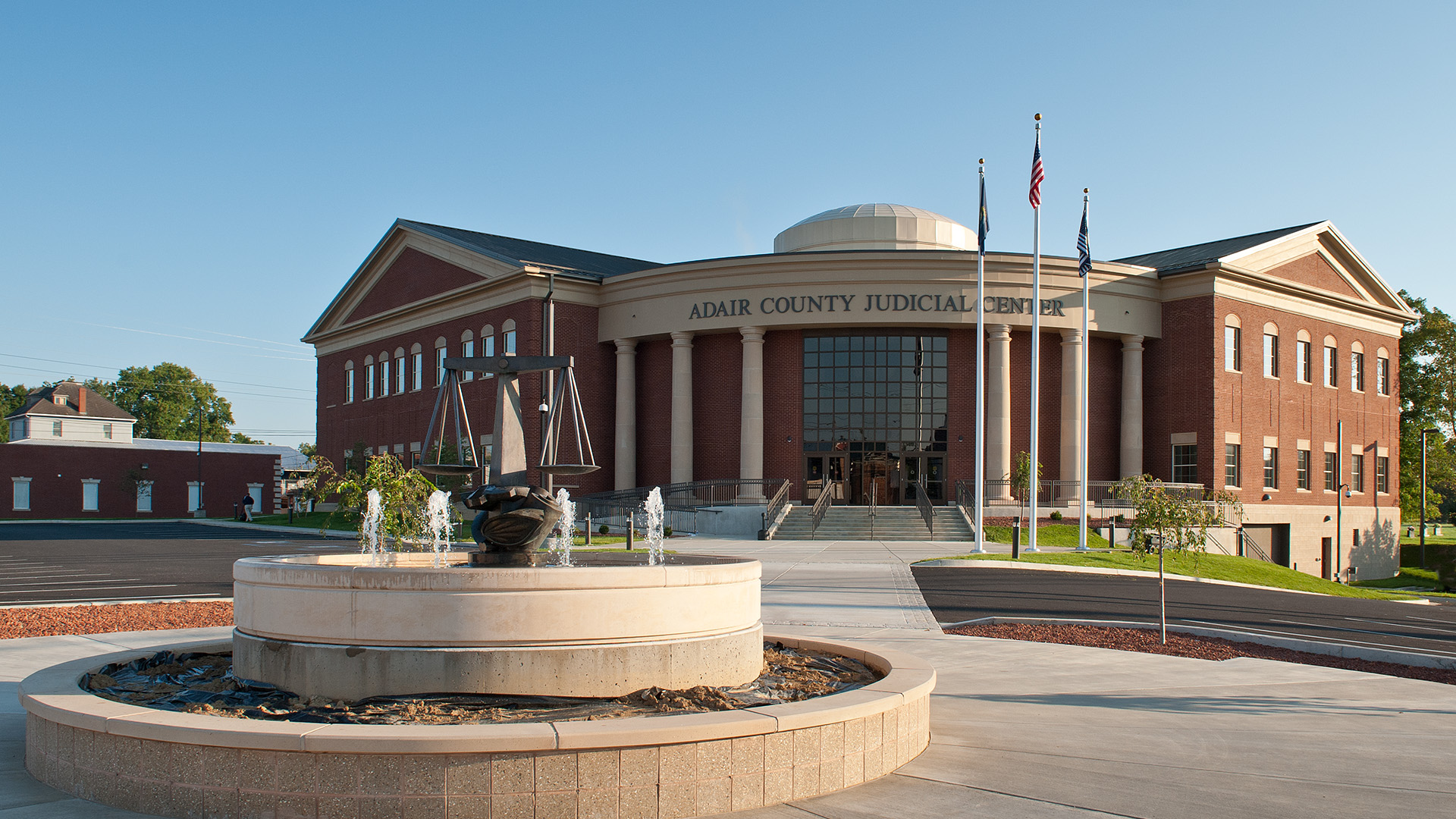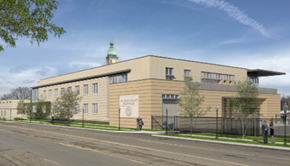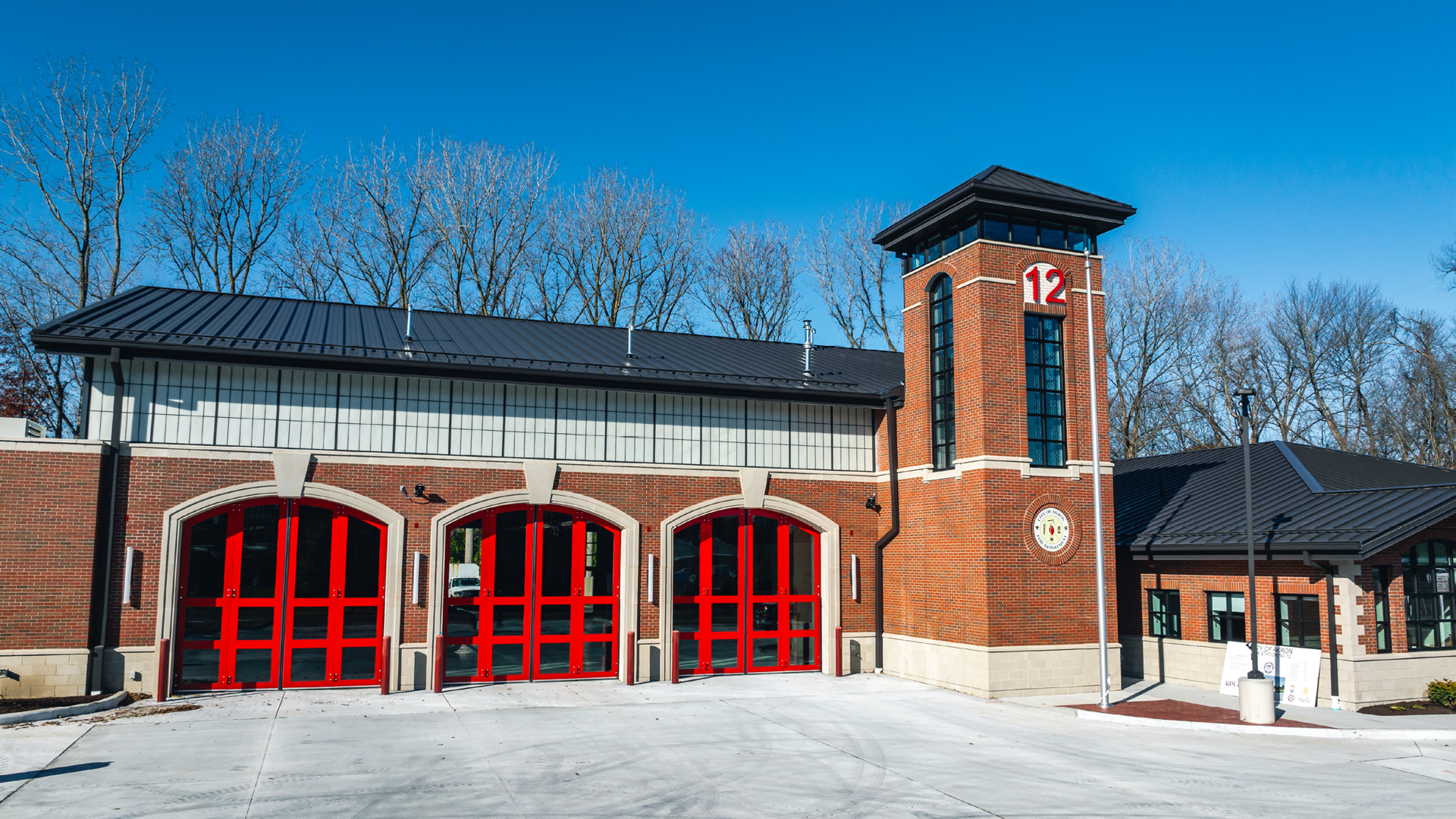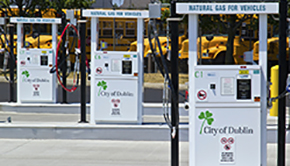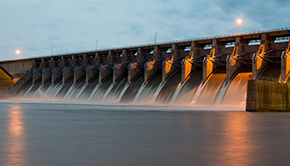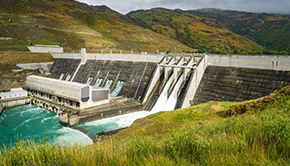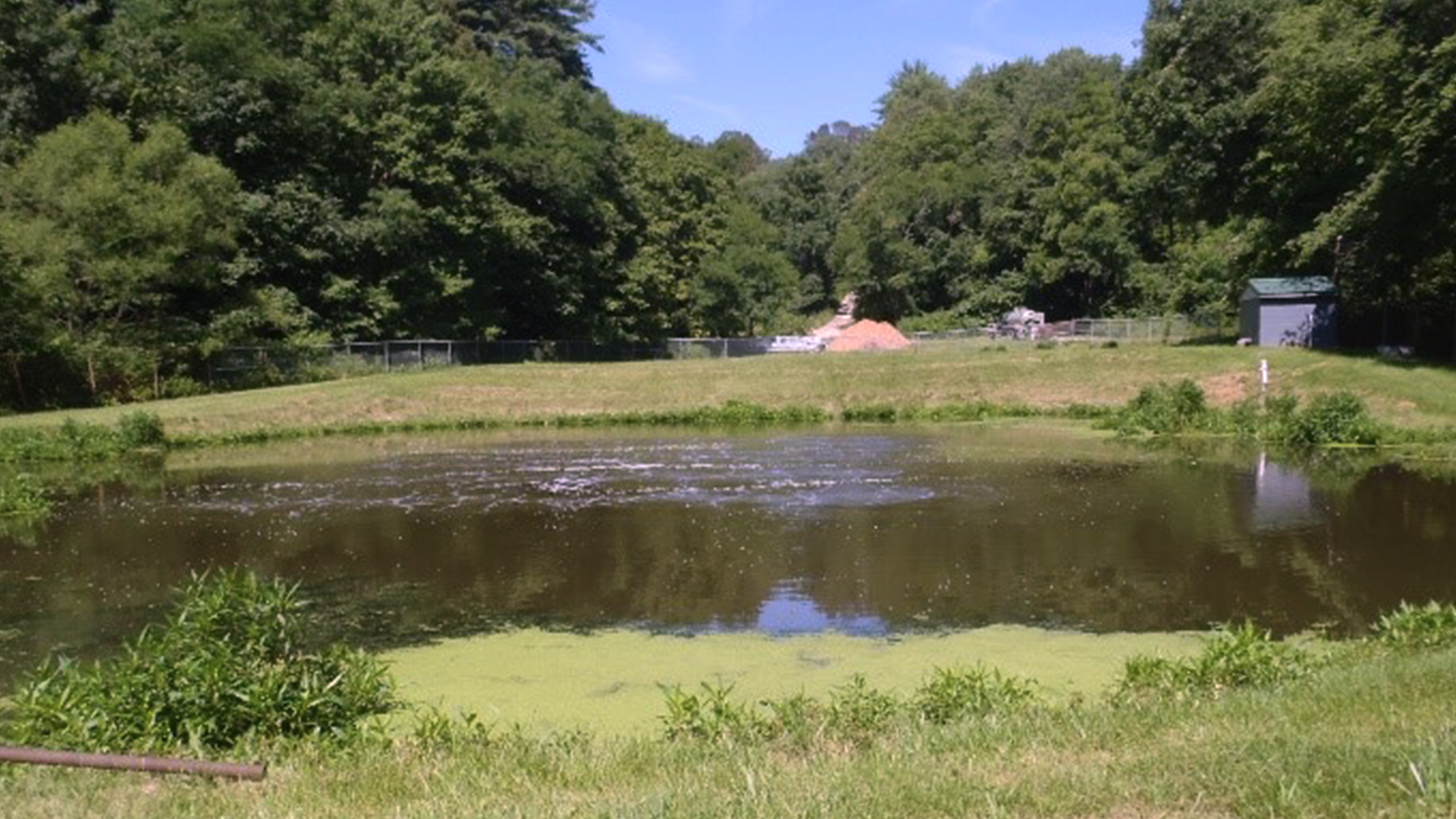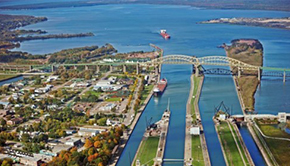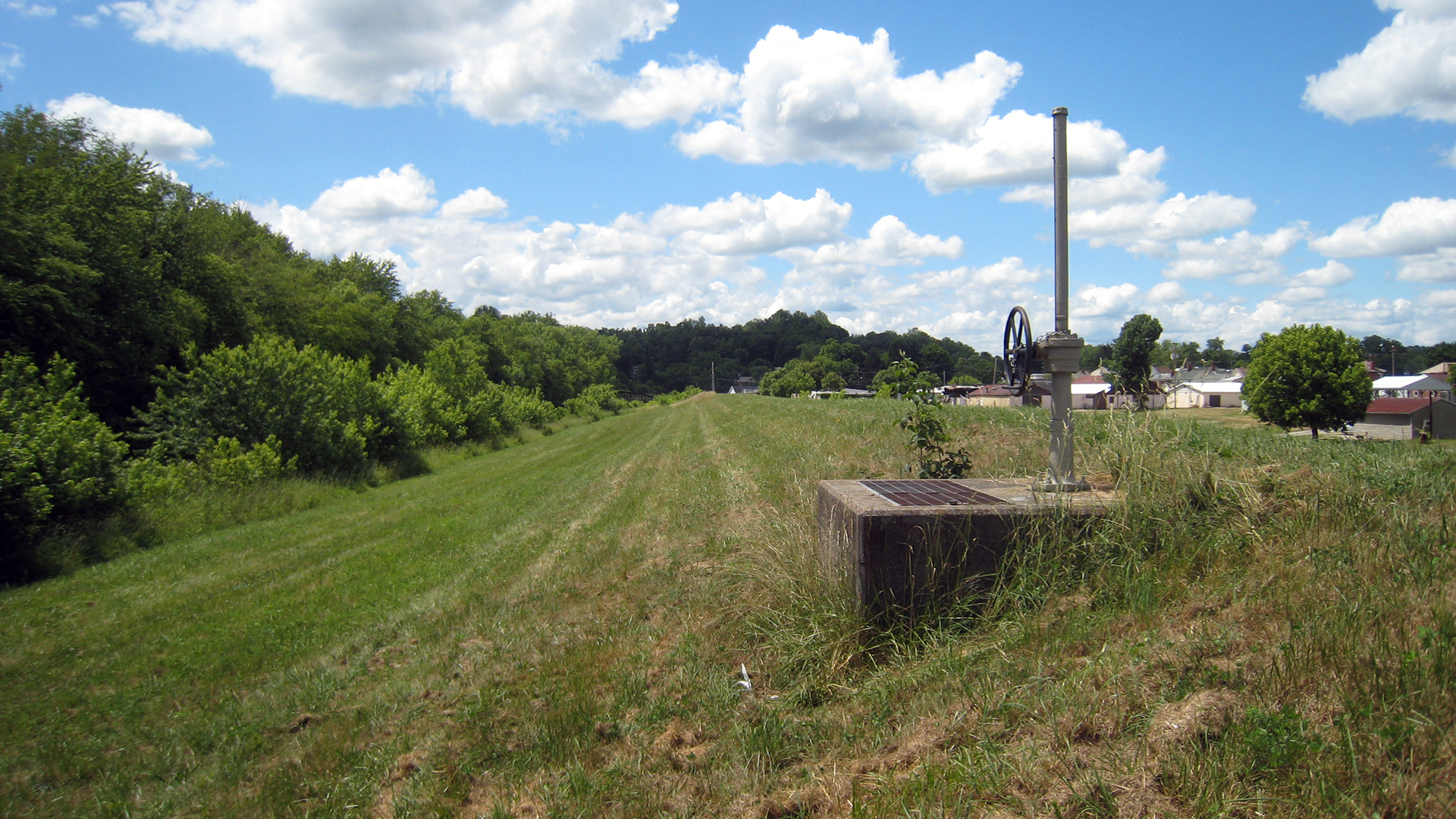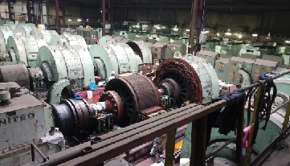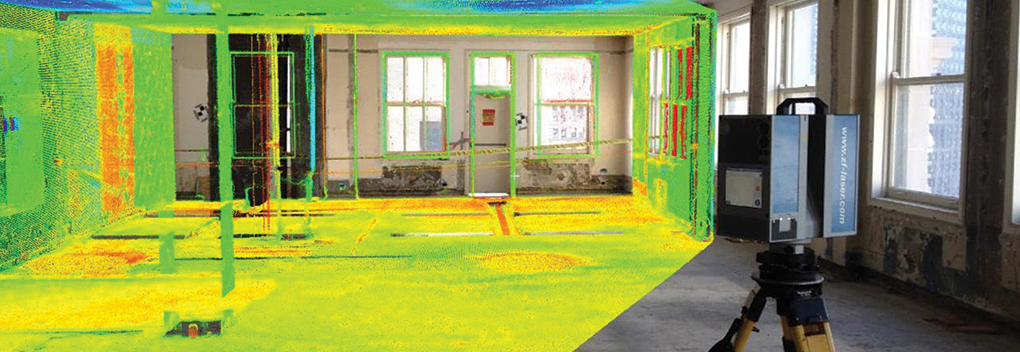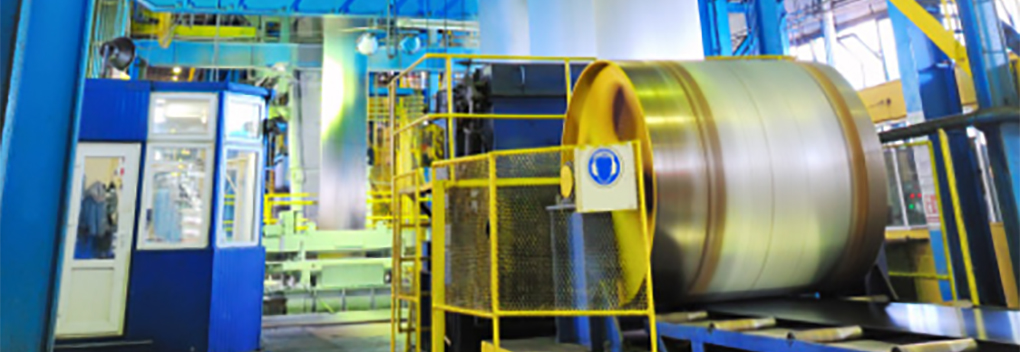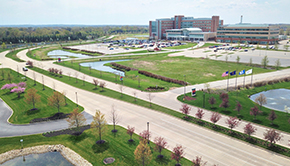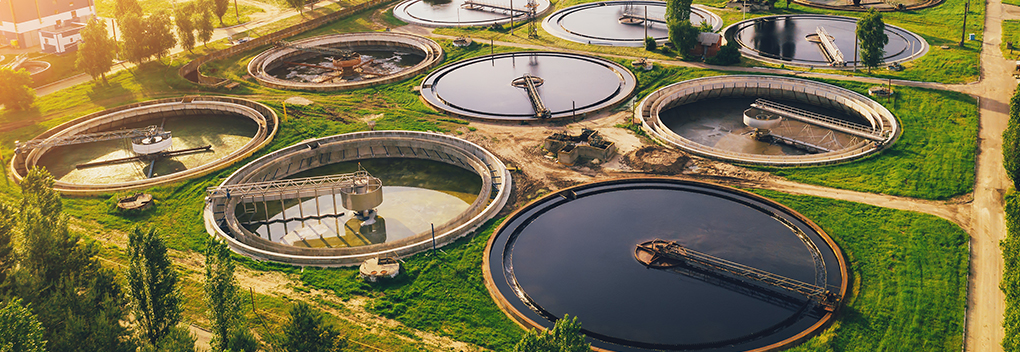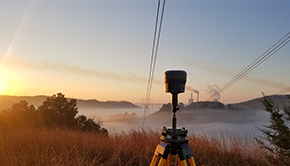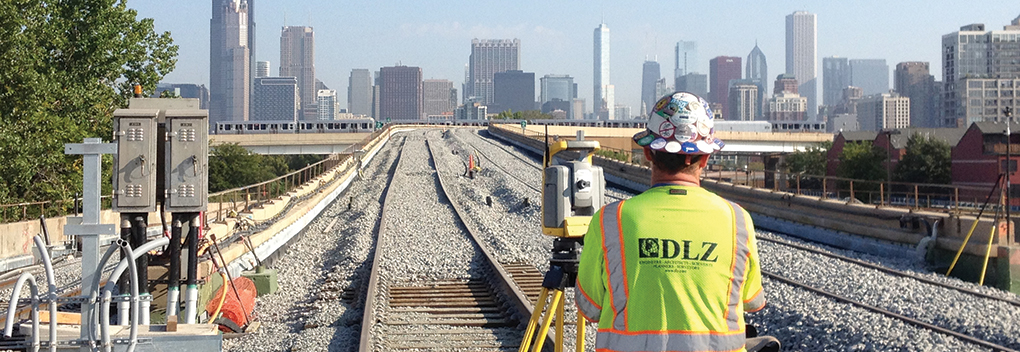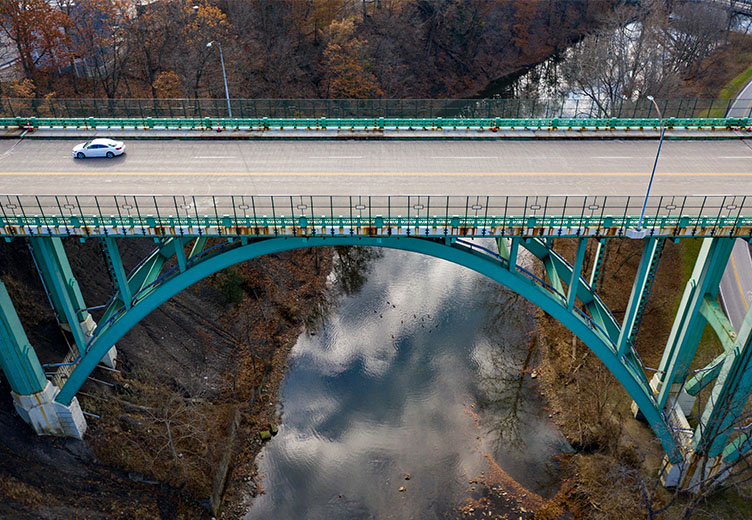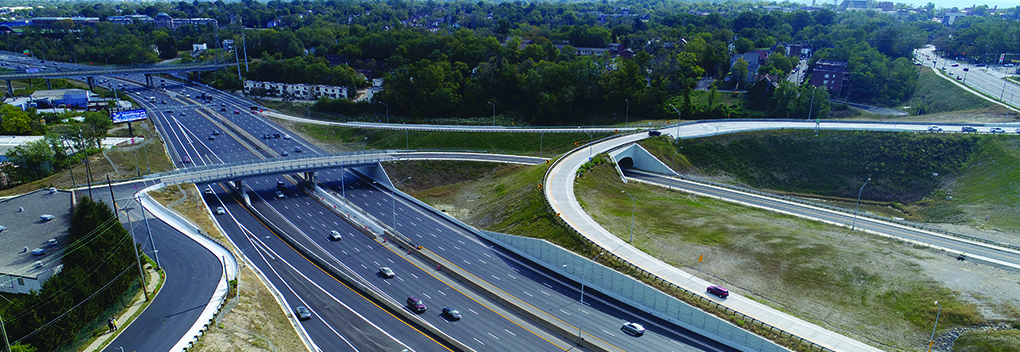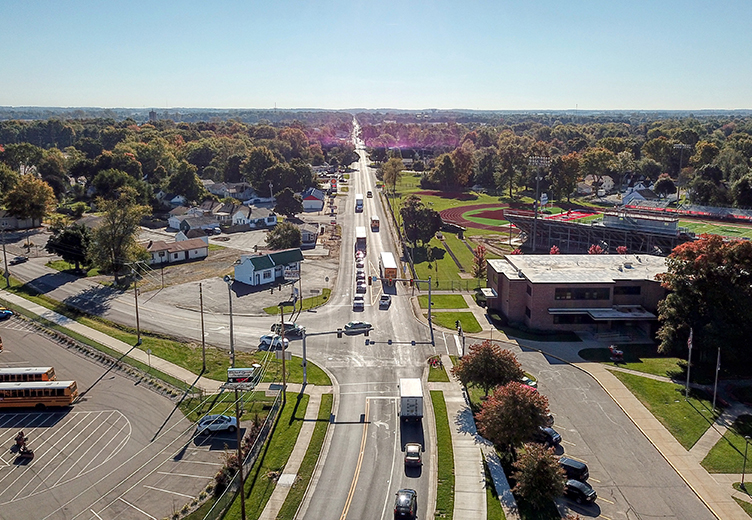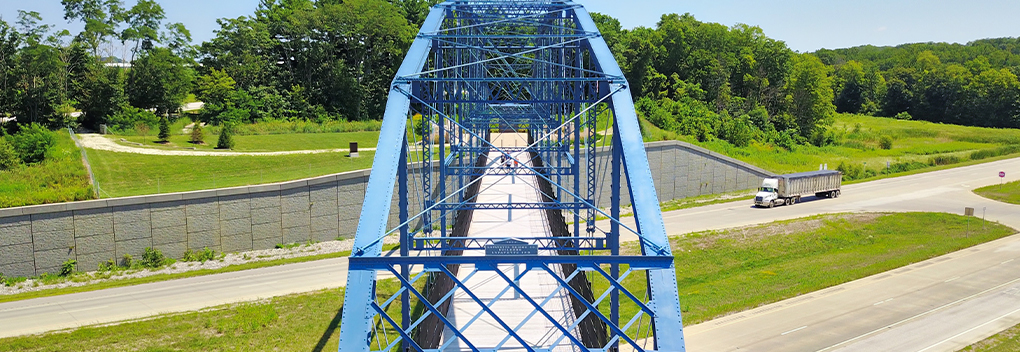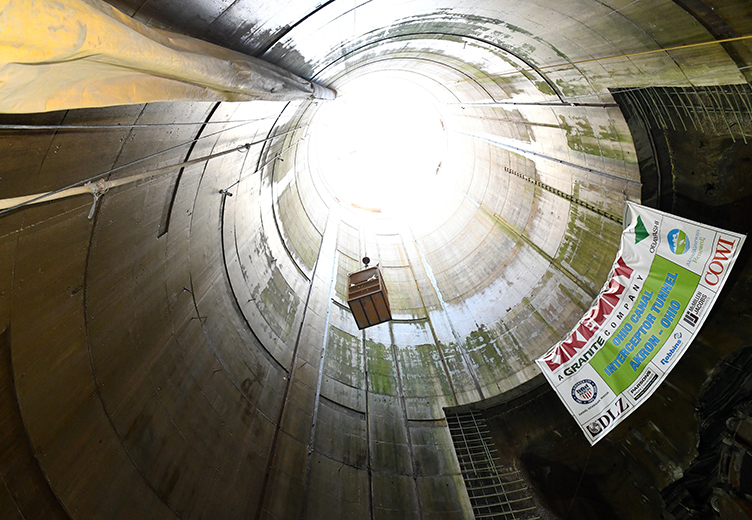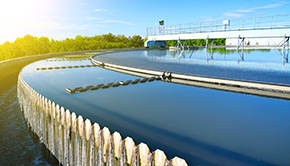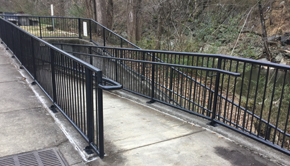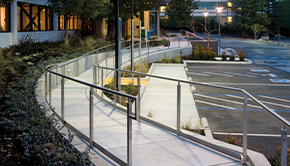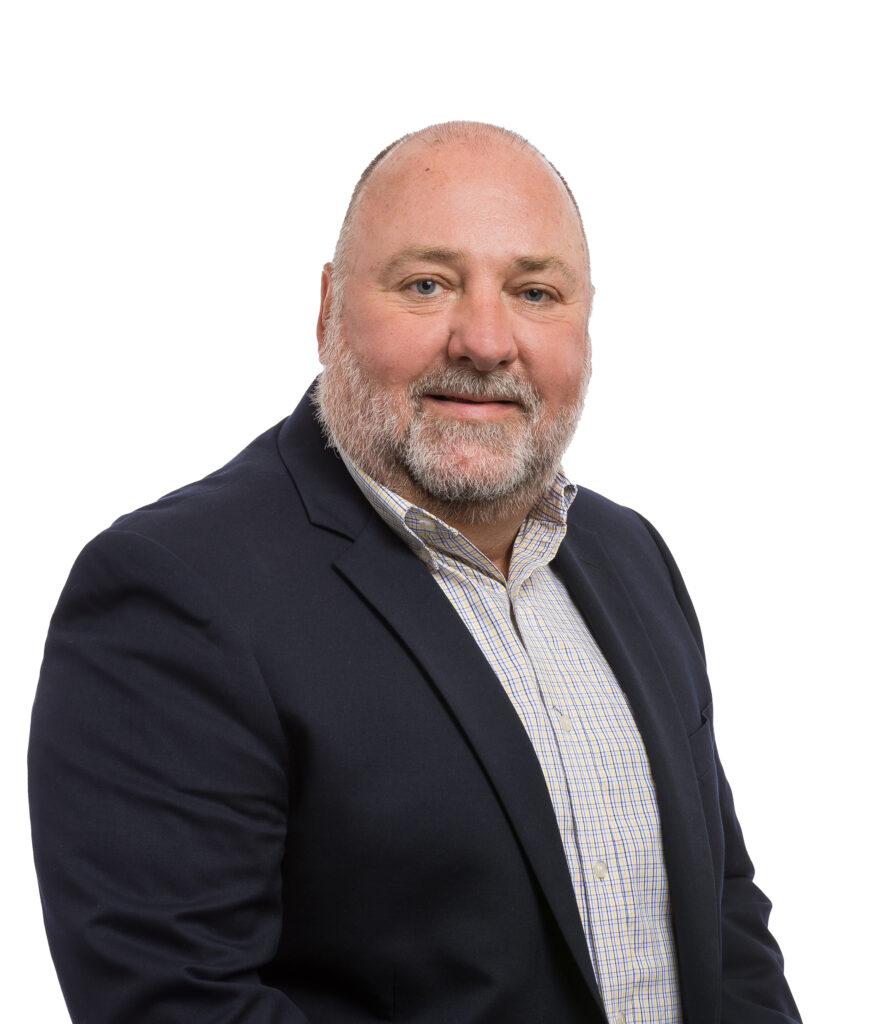DLZ Digest
DLZ Michigan’s Official Newsletter!
What are PFAS?
PFAS chemicals (per-and polyfluoralkyl substances) are a group of manufactured chemicals that have been used for beneficial purposes in consumer products and in manufacturing since the 1950s. These products have been used in food packaging, stain and water-repellent fabrics, and nonstick cookware (Teflon). These products also have a variety of industrial uses and are a primary ingredient in an aqueous fire retardant referred to as AFFF. PFAS substances are composed of a chemical fluorocarbon chain that is extremely stable in the environment and does not break down readily. Therefore, because of its global use for many years, and its persistence in the environment, it is also pervasive, being found in our soil, groundwater, and surface waters around the globe.
PFAS is now in a group of chemicals referred to as “Emerging Contaminants” because regulations involving PFAS are very new, and the long-term health effects from exposure are still being researched and are not fully understood. However, the literature suggests that exposure may cause various kinds of cancer, kidney damage, and affect reproductive organs and the body’s immunological system. Studies of PFAS toxicology have prompted the United States Environmental Protection Agency (EPA) and State regulatory agencies to generate cleanup criteria for individual PFAS compounds in the Part per Trillion range, with some EPA drinking water advisory levels in the part-per-quadrillion range. These are much lower than typical cleanup criteria based on Part per Million, or Part per Billion cleanup standards.
DLZ staff have been actively involved in PFAS investigations and remedial design services since it was first sampled for regulatory purposes at Wurtsmith AFB in Oscoda, Michigan in 2010. DLZ has completed source investigations for PFAS in both soil and groundwater, assessed the distribution of PFAS in surface and storm water, contaminant plume delineation, and worked with the Michigan Department of Environment, Great Lakes, and Energy (EGLE) to study the manifestation of foam on Van Etten Lake adjacent to Wurtsmith AFB in Oscoda. Most recently, on a large PFAS project in Mid-Michigan, DLZ completed a source evaluation and delineated a PFAS plume in groundwater that extended approximately ½ mile from the source. DLZ’s staff then worked with EGLE and the Michigan Attorney General’s (AG’s) office to generate a cost model for PFAS remediation which was used for cost recovery/litigation purposes. DLZ has been informed that the cost model will be used as a standard by EGLE and the AGs office for PFAS litigation proceedings in the future. DLZ staff were also selected as both PFAS fact and expert witnesses in this important litigation process, which was the first litigation settlement relating to PFAS in the State of Michigan involving EGLE and the Michigan AG.
In an additional project, DLZ is currently working with EGLE, the Michigan Department of Health and Human Services (MDHHS), and the Michigan PFAS Action Response Team (MPART) to evaluate impacts to residential wells in Independence Township where two municipal wells have been shut down due to PFAS detections. DLZ is evaluating the source of PFAS while conducting a strategic residential well sampling program to evaluate the potential impact on private residences not connected to the municipal water supply. In May 2023, DLZ presented the results of the Independence Township PFAS project at the Michigan ACEC conference on Infrastructure and Sustainability in Lansing Michigan.
Contact: Scott Park, CPG; Sarat Bobba, PE
Revitalizing Detroit: DLZ & City Demolition Department Join Forces to Clean Up Blight
DLZ has been working closely with the City of Detroit Demolition Department to ensure proper commercial and residential parcel cleanup in all Detroit neighborhoods. The partnership aims to address the increasing blight in the city and promote the revitalization of neighborhoods. With over 80,000 vacant lots and abandoned buildings, Detroit has been struggling with blight for decades. This has led to a decline in property values, public safety concerns, and a negative impact on the overall quality of life in many neighborhoods.
Over the past few years, DLZ inspectors and testers have been working hard to check all parcels before and after demolition to assure the areas are safe from any dangerous materials, waste, or gases. The City of Detroit Demolition Department is working to demolish and clean up abandoned buildings and vacant lots across the city.
DLZ is responsible for providing engineering and environmental consulting services to determine the extent of asbestos and hazardous materials, as well as develop demolition plans and cost estimates.
The partnership has already seen significant progress in the cleanup and demolition of abandoned buildings and vacant lots. In 2022, the City of Detroit Demolition Department completed the demolition of over 3,000 structures, with an additional 1,000 scheduled for demolition in 2023.
The partnership with DLZ has allowed the City of Detroit Demolition Department to streamline its demolition and cleanup efforts, making it possible to address blight in all neighborhoods across the city of Detroit.
Contact: Dor’Mario Brown
Don’t Wait! CDSMIs are due January 1, 2025
To be compliant with the Michigan Department of Environment, Great Lakes, and Energy (EGLE) Rule 325.11604(c)(ii) of the Michigan Safe Drinking Water Act, 1976 PA 399, all Community Water Supply Owners must submit a Complete Distribution System Materials Inventory (CDSMI) to EGLE by January 1, 2025.
The level of effort needed for the CDSMI is based on the Preliminary Inventory data that was submitted to EGLE in 2019-2020 and how many water service accounts you have within your community.
Proper planning NOW is recommended for the CDSMI. The primary components of the CDSMI are:
- Organize and Review Existing Records
- Evaluate Existing and/or Create an Inventory Tracking System and Procedures
- Conduct Physical Verification of Service Line Materials
- Evaluate Results of Physical Verification
- Conduct Additional Verification of Service Line Materials or Other Distribution System Components, as/if Needed
- Update and/or Expand Records to Develop the CDSMI
The DLZ Team is happy to help you with your CDSMI needs. For questions or more details, please contact Laura Gruzwalski.
Contact: Laura Gruzwalski, (248) 836-4053
Kent County – North County Campus – New Sheriff’s Substation & Health Clinic



DLZ worked with Kent County, Michigan to provide architectural and engineer design services for a new North County Campus facility to accommodate a sheriff’s substation, health clinic, flex office, and training space for County personnel.
The proposed project program totals approximately 30,000 SF, built on a 14-acre site in Cedar Springs, Michigan. By creating a new, consolidated facility, the project provided improved spaces for public services, offices, training, lockers, equipment, and a vehicle/sallyport for the Sheriff, as well as exam rooms, labs, and nurse’s stations for the Health Department.
DLZ provided site development, architectural, civil, and structural engineering design services, including bidding and construction administration.
The project has successfully navigated complex programmatic requirements and consensus-building among varied stakeholder groups on a limited budget. The project is an essential piece of the County’s public safety and health services infrastructure.
Contact: Jason Vetne, AIA, LEED AP
Employee Spotlight:
Scott Park, CPG
Q: How long have you worked for DLZ and what do you do there?
A: I’ve worked for DLZ for the last eight years of my 35-year career. I am currently the Environmental Division Manager for DLZ.
Q: What is the most interesting project you were part of?
A: I’m going to answer this in several parts because it’s difficult to select just one. I find interest in many projects that I am involved in because of the variety of project settings, and the diverse glacial geology across Michigan that brings different challenges to site assessments and remediation.
Relating to PFAS, I recently had the opportunity to work closely with EGLE and the Michigan Attorney General’s (AG’s) office on a project involving cost recovery negotiations relating to a large source of PFAS contamination in mid-Michigan. Being part of the negotiation process and working closely with litigators relating to this emerging contaminant was very interesting.
Our environmental staff is also working with our Indiana Division on a very large civil design project for the City of Elkhart as part of their Long-term Control Plan where the installation of a below-ground combined sewer overflow tank and associated sewers will require substantial dewatering. However, the site lies adjacent to a Superfund site, with a large Trichloroethylene (TCE) plume, which could be affected by the necessary dewatering process. This is a very challenging but interesting project involving a thorough contaminant assessment, groundwater modeling to simulate dewatering and regulatory agency negotiations.
Q: Why is exposure to PFAS a concern?
A: The group of PFAS chemicals have had a beneficial role in consumer goods since the 1950s and have experienced widespread use globally. However, the chemicals, which are not natural, but manufactured, are also very slow to break down in the environment. Therefore, exposure to PFAS has occurred across the globe. Literature tells us that exposure to PFAS can increase the risk of several types of cancer in addition to other health issues including reproductive effects, and effects on the body’s immune system.
Q: What do you enjoy most about your career?
A: Although I enjoy the challenges of environmental science/geology, it’s the interaction with people and the relationships with staff and clients that I find most enjoyable. I thoroughly enjoy working with my staff here at DLZ as we work together to serve our clients. I’ve also developed great friendships with many clients over the years that I enjoy working with on a daily basis.
Q: What is something people don’t know about you?
A: I’ve taught geology at the collegiate level for 25 years as an adjunct professor. I was on the faculty at Western Michigan University (WMU) for 10 years and have been an adjunct geology professor at Lansing Community College (LCC) for 15 years. Between WMU and LCC, I’ve taught eight different geology courses, both in person and online.
Q: What’s your secret talent no one knows about?
A: I played saxophone since the 5th grade, through college, and then played in my church worship band for about 10 years in the early 2000s. That was fun, but I had to give it up and unfortunately, the saxophone now sits idle.
Q: Who has been the most influential person in your life?
A: My wife has definitely been the most influential person in my life. We married in 1989, and she has been by my side through the busy, but rewarding years of my career, which began way back in the 1980s when environmental consulting was in its infancy. Ironically, after starting in an admin position for a local solid waste company, she now works in Environmental Compliance and Health & Safety in the Landfill Gas industry; so, we almost speak the same language now.
Welcome Interns!
Welcome all Interns to DLZ! You’re a great addition to the team and we are thrilled to have you working with us. We believe that your skills, experience, and creativity will have a real impact on our team. We definitely hope you’ll always feel free to speak up and share your thoughts and challenges with us. We look forward to learning and growing with you in your career. You’re a part of a team now, and we know you’ll do great things here!

